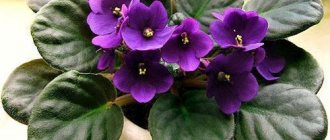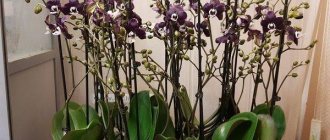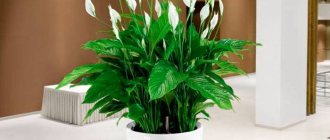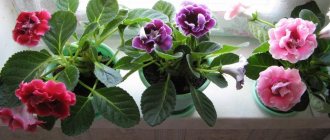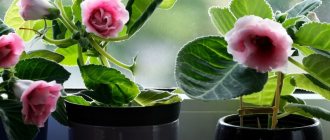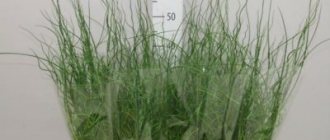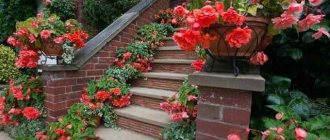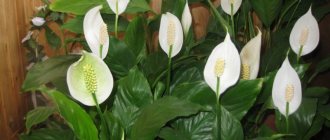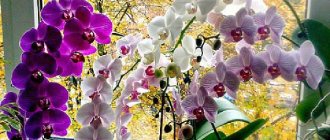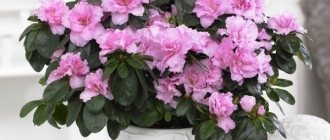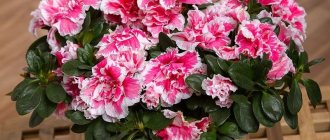Are you a skilled gardener and love to surround yourself with all kinds of vegetation? Then you are at the right place. True, we will not tell you about caring for violets, ficus or echeveria - we have moved on. Bonsai is the hero of today's material. What to do with a dwarf Japanese tree if it ends up in your apartment? How to care for bonsai? Let's study this topic more carefully.
Bonsai is a tiny tree that has been used for decoration in many traditional Japanese homes for centuries. However, bonsai is also quite popular in our country as an unusual and “living” part of the interior. The main components of proper care: light, soil, watering, replanting, fertilizers.
Light
The tree needs 6 hours of sunlight every day. If the plant is in a dark place, then the lighting should be increased to 12 hours a day. Do not overdo it with electric light - the plant may be damaged. It is clear that in our climate it is difficult to care for bonsai, providing many hours of natural light. Especially when it's winter or autumn outside. However, try to move the tree during the day, maybe move it to another room, to provide the plant with the highest possible level of light and comfort.
Bonsai crown formation
Bonsai are indoor plants that require constant pruning. This provides visual appeal and the ability to control growth. There are different forms of bonsai.
bonsai garden
Important! To perform pruning you need a special set of tools.
How to form a bonsai yourself (crown):
- There should be no more than 6 pairs of leaves on each shoot. You can start from the top, since this is where the maximum number of extra shoots is removed.
- Be sure to trim branches that are too long, dry, gnarled, damaged or colorless.
- Remove shoots that are turned towards the trunk in the direction of growth.
- You should use scissors to remove excess leaves if there are areas with dense formation on the branches.
Crown formation options
The formation of a bonsai also involves the beautiful bending of the trunk and branches. This can only be achieved with wire. The shoots and trunk are tied with rigid wire. As it grows, the shape of the wire changes, which will guide the growth of the branches, as well as their shape. Requires skill and many hours of practical experience.
The soil
Select soil for your type of plant in special stores. If you have a coniferous tree, buy soil for coniferous trees; if you have a deciduous tree, plant it in the appropriate soil. Good soil is when it is “aerated”, i.e. the air moves back and forth. It also ensures proper interaction with water. The liquid should sufficiently moisten the plant and flow down. The optimal soil pH should be between 6.5 and 7.5.
Care
If you take care of a bonsai, then its cultivation becomes problem-free. When the bonsai style is left unmaintained, the tree is difficult to protect. Mandatory rules for lighting bonsai:
- the plant develops well in bright light, so the pot is left in a bright place;
- for active growth of bonsai, choose the western or eastern side, where the sun is early in the morning and in the evening;
- On cloudy days, bonsai need artificial care. You can install a mercury lamp next to a deciduous tree, which heats the plant.
The art of growing and caring for trees involves accessing sufficient moisture to their root system. Therefore, a water tray is placed under the flower tub. In the morning, you can irrigate the bonsai from above with water. This way the plant forms faster.
When a bonsai is a mini version of a plant from the subtropics, represented by myrtle, pomegranate or a composition of pine, then its comfortable winter temperature value is from +5 to +15 °C. If this is a tropical bonsai, then high temperature access to the plant is formed here from +17 to +25 °C.
When watering the soil of a flower, it should retain moisture. It needs to be watered in the summer season. However, bonsai of subtropical varieties do not need to be cared for in summer. If a bonsai of a tropical variety is growing at home, then watering it with cold water is prohibited. It is better to water young deciduous bonsai with settled water.
Watering
How often should a tree be watered? Once a day, a week or maybe 2 times a month? This point is the most difficult in matters of how to care for bonsai. Nevertheless, everything matters in watering: what time of year it is, the daily portion of sunlight, the type of soil, the type of tree and its age. You can develop a suitable watering system only by observing the appearance of the plant and the dryness of the soil. If the tree becomes dull and the ground is 2-3 cm dry, it’s time. Watering may be required once a day or only 3 times a week. Over time, you will learn to understand how much your bonsai needs to “drink”. So, general watering tips for all trees:
- Water the plant preferably in the morning.
- In summer or other warm days, water the tree more deeply than usual.
- In winter, water no more than once a week. During this period, the plant is dormant.
- Watering is directly related to sunlight. The longer the tree stays in the illuminated place, the more water it requires.
- During the period of bonsai development and growth, try to water it regularly so that the plant adjusts to the water supply schedule.
- Also, don’t forget to check the soil for dryness. Carefully feel the soil with your finger without touching the roots.
Rules for caring for bonsai at home
DIY pine bonsai in the garden
Bonsai is a tree that is not difficult to care for at home if you devote enough time to it. In order not to provoke problems with the growth of any breed, you should initially choose the right place and set the correct temperature.
Tree care
Where to put the bonsai
The ideal place for the plant would be a windowsill. It is important to consider:
- When installing a flowerpot on the windowsill of a western window, you should place it on the right.
- On window sills on the south side they are placed on the left.
- It is permissible to place the pot on a coffee table or shelf near the window, but according to the same principle as on the windowsill.
- The plant needs to be rotated 180° relative to the light side of the window 4 times a week.
- You need to open the window completely, removing curtains or blinds during daylight hours. In winter, additional lighting from fluorescent lamps is installed.
- Do not install the plant close to objects that emit heat - radiators, table lamps, fireplaces.
The choice of growing location is approached as responsibly as possible.
Air temperature
Bonsai, the care of which requires the correct temperature regime, will develop normally only in the climatic conditions familiar to its breed:
- Subtropical breeds tolerate room conditions remarkably well in terms of temperature. The optimal indicator for them will be 18-25 ℃ above zero. In winter, it should be placed in a cool room with a temperature of +15 ℃.
- Tropical breeds can withstand higher temperatures in summer, and in winter they are installed in a room with a temperature of +18 ℃.
- Deciduous and coniferous trees (for example, tea tree) feel normal in summer at any temperature. In winter, the flowerpots are moved to a room with a temperature no higher than +10 ℃.
Temperature changes
On a note! In the summer, it is allowed to move bonsai crops to the balcony in order to increase the supply of oxygen.
Watering
In the process of caring for a plant, problems with watering often arise. There are several reasons. A small amount of soil in pots or cache-pots leads to the fact that the moisture from them quickly evaporates and the soil dries out. Abundant (excessive) watering can also cause problems with the root system. It is necessary to adhere to a clear irrigation regime.
Watering is important for bonsai
Additionally, it is recommended to use special watering tools so that the root zone of the plant is not exposed. Use a specially designed watering can or drip irrigation.
Note! In the summer, you need to spray the above-ground part with a spray bottle every day. Instead of spraying, you can increase the air humidity in the room.
Water the bonsai flower exclusively with melt water. If there is none, use well-settled water instead. The temperature at the time of watering should correspond to room temperature.
One of the watering methods
Fertilizer
It is possible to grow a miniature tree only by limiting the application of fertilizers. But it is also impossible to leave the substrate without feeding. To support the growth and development of the plant, adhere to the following recommendations:
- In spring, apply a minimum dose of nitrogen fertilizers. This feeding activates growth.
- In summer, a complex fertilizer is used, which contains nitrogen, potassium and phosphorus.
- In autumn it is worth using a minimum dose of potassium-phosphorus fertilizers.
Fertilizers for active growth
Flowering or fruiting species require additional feeding. Microclimate indicators are important for the development of culture. During the period of fruit or ovary appearance, potassium fertilizers are applied.
Transfer
How to care for bonsai without replanting? Alas, sooner or later you will still be faced with the need to replant the tree. The best time to move a tree to another “home” is spring. During the cold period (dormant time for bonsai), the plant strengthens its roots and is psychologically ready for replanting.
In general, the plant should be replanted annually or only once every 5 years. By the way, young trees will more often require moving, and older bonsai can easily remain in the same pot for up to 5 years. If the leaves of the tree turn light yellow, young ones appear, and buds form on the stem, it’s time to replant.
How to grow bonsai from seeds?
Seeds of trees and shrubs suitable for bonsai are divided into two types. Some crops are immediately ready for germination, but the evolutionary “program” of many species includes a period of hibernation, when the sprout waits out the cold season. At home, stratification will help imitate winter.
Tree seeds for Japanese bonsai are placed in damp sand or sphagnum moss for 3–5 months, after which the container is placed in the refrigerator. At a slightly positive temperature in a humid environment, the seed prepares for growth. When it is transferred to warmth, the sprout quickly awakens. For evergreen species and plants with seeds that have a particularly durable shell, heat or temperature contrast is used to awaken.
Sowing of seeds is carried out from spring to early autumn. Seedlings obtained in the second half of summer already need lighting, which is simply irreplaceable in autumn and winter.
For germination and the first months of life of seedlings, use a light sand-peat substrate or peat tablets that have been soaked and absorbed with moisture. Until a sprout appears on the surface, the container should be kept in the dark under the film. The air temperature is selected depending on the bonsai tree being grown.
To avoid the formation of condensation and rot, the greenhouse is ventilated. When seedlings appear, a small amount of fresh air is provided inside and the seedlings are transferred to light. As necessary, seedlings are watered and fertilized with complex compounds. When the plant reaches a height of 10–12 cm, it is replanted.
At this stage, the main root is shortened by a third to slow down the vertical growth of the tree. They immediately begin to form the future trunk, for which they use copper wire.
Fertilizers
Trees are usually planted in small pots, so bonsai are in greater need of feeding. Potassium, nitrogen and phosphorus fertilizers are well suited for the plant - they are responsible for the green color of the leaves, the development of roots and the appearance of flowers. Moreover, you need to care for your bonsai with fertilizers regularly at least 3-5 times throughout the year.
Don't forget about the appearance of the bonsai! The tree takes on new beautiful shapes with proper pruning of branches and shoots. It is better to remove excess branches in the spring and only with sharp tools, so as not to accidentally harm the plant. As a sign of gratitude for your careful care, the bonsai will decorate your home and fill it with a lemon-pine aroma for many years.
Text:
Growing bonsai at home
You can do this in several ways:
- plant with seeds;
- rooted cuttings;
- form a seedling from nature or a nursery;
- transfer to a pot and adjust the ready-made adult plant.
The third method is the fastest and most profitable, since the seedling has already acquired developed roots, and with its ground component you can fantasize as you please.
Those who want to grow bonsai, so to speak, from scratch, should be prepared that they will have to tinker a lot, but this will only be a joy for a real gardener. He can monitor and nurture the plant from the moment of its first shoots.
Choosing a container
What is more important to you: the plant or the container in which it grows? That's right, bonsai pots should highlight the beauty and grace of bonsai. But nevertheless, when choosing a vessel, you need to pay attention to how it looks externally, what material it is made of, what shape and size it is.
As for the last two parameters, we must proceed from some characteristics of the bonsai.
- If the tree’s root system is unstable, then a deep vessel will suit it.
- Trees with an inclined crown of increased splendor will look good in wide and slightly flattened bowls.
- Japanese maple, for example, has a thin, curved stem and very graceful leaves. This specimen will look better in a round or oval-shaped vessel.
- If your miniature tree consists of thick branches and has a dense crown, then rectangular or square dishes are appropriate for it.
- It is better to keep plants with open roots in a narrow and deep container.
The material from which the pot is made can be clay or wood, ceramics or glass. Experts believe that clay pots that are highly permeable to oxygen and absorb moisture are the most preferable. Light tones of vessels are recommended.
IMPORTANT
Whatever the pot is made of, be sure to ensure that there are enough drainage holes in the bottom for proper ventilation of the bonsai root system.
Light mode for bonsai
The length of daylight in our countries is slightly different from the length of day in the subtropics and tropics and therefore plants may experience light deficiency. When placing bonsai indoors, these and the following factors should be considered:
- location of the plant indoors;
- distance from the source of sunlight - placement on a windowsill, stool, coffee table, stand, etc.;
- correct definition and placement on the side (North, South, East, West);
- the angle of the sun's rays hitting the plant;
- obstacles to sunlight - trees outside the window, buildings.
It is important to provide your bonsai with constant consumption of sunlight, this will only be beneficial. You should also remember such points as the angle of incidence of light on the plant. The bonsai will grow more intensively and gain strength faster if the plant is located on the right side on the western window, or on the left, on the eastern one. To allow light to reach the plant, you also need to monitor the curtains and move them aside or raise them in time.
In any case, no matter what you do, the plant will experience some lack of light, this is due to its geographical location. Therefore, it will be necessary to compensate for this deficiency with the help of artificial lighting. We do not recommend using these “tricks” all year round; this can have a negative impact on the plant, but in cloudy weather, in late autumn or winter, such lighting is simply necessary. It is possible to use halogen lamps, mercury lamps, and fluorescent daylight lamps. Do not use standard incandescent lamps, they provide insufficient illumination, but at the same time have a detrimental effect of heat rays. The fluorescent lamp is most suitable for artificial illumination of bonsai. It is quite easy to use and has a good efficiency. Buying this lamp will not be difficult.
Brief Description of Japanese Art
Bonsai are not genetically dwarf plants. A miniature look is given to trees and shrubs by constant shaping - pinching, pruning, applying wire. The purpose of all these procedures is to redistribute the energy of healthy growth.
Moreover, not only the crown is formed, but also the root system. Almost any plant that has a woody trunk and relatively small leaves can be turned into a banzai. Small bowls and flower pots are used for planting. Live moss is planted on the surface of the soil.
The peculiarities of caring for bonsai after purchase are to create the most favorable conditions. Different types of plants are used to form dwarf trees. First you need to study the care requirements of the specific crop that served as the basis for creating the bonsai.
Choosing a tree for bonsai
In order to grow a beautiful bonsai tree at home without much hassle, it is best to choose one of the plants listed below, about which gardeners have extremely positive reviews. The photos will help you see what such a green pet will look like.
- Indoor types of citrus fruits: orange, lemon, calamondin;
- Ficus benjamina;
- Dwarf pomegranate;
- Willow;
- Decorative varieties of apple trees;
- Barberry;
- Hawthorn;
- Oak;
- Maple.
These are just some of the most popular options. Growing bonsai can be done from a variety of plants that are found everywhere: in parks, forests, gardens. You can also purchase seedlings in nurseries. The price will depend on the type of tree chosen and its height.
Common Pests
For each individual plant species, different pests pose a threat. Insects, which, according to the observations of gardeners, most often infect bonsai, are shown in the table.
Table - Bonsai pests
| Pest | Manifestations | Fighting methods |
| Plant aphids | – Leaves are deformed, modified; – the plant becomes covered with sticky secretions; – sooty fungus is attached | – Bonsai is treated with a soap solution; – damaged leaves and shoots are cut off; – spray the tree with a preparation containing permethrin |
| Nematodes | – The root system or above-ground part of the plant is affected; – thickenings resembling a tumor form on the roots and stems; – the bonsai sheds its leaves, stops growing, and dies | – Reduce watering; – roots are treated with nematicides; – replant the bonsai with a complete replacement of the soil; - move to a cool place |
| Scale insect and false scale insect | – Convex brown bumps appear on the stem; – shoots stop developing; – leaves fall | – Scale insects are removed with a brush or removed with tweezers; – wipe the affected areas with diluted medical alcohol; – sprayed with any insecticide |
| curly aphid | – Thick white fluff appears; – leaves wither and become dull; – young shoots turn white | – Wipe areas where insects accumulate with alcohol; – sprayed with a preparation containing permethrin |
| Spider mite | – A thin web appears; – leaves become discolored, dry out, fall off | – Move the bonsai to a shaded room; – increase humidity; – wipe the affected areas with alcohol; – sprayed with the drug “Aktara” |
Basis for composition
It is already useless to form mature, well-developed plants. Work on cutting and shaping into the desired shape begins early. A young plant will tolerate all procedures more easily and will adapt to cramped growth conditions more quickly than an old one. Therefore, the choice of basis for creating bonsai must be approached responsibly. There are three ways to obtain a suitable plant.
- Growing from seeds. You can grow bonsai from seeds at home. Planting material is purchased in specialized stores. If you plan to create a bonsai from wild trees, you can collect pine, birch or maple seeds yourself. To germinate bonsai from seeds and obtain strong seedlings, be sure to take into account the requirements for the conditions of a particular crop. The difficulty of growing from seeds lies in the slow growth - it will take at least a year to start shaping.
- Growing from cuttings. Less time passes from the moment the cuttings take root until the plant is ready for shaping. Especially if fast-growing crops are used. Initially, efforts are directed toward the formation of a strong root system. It will not allow the plant to die if the crown is radically pruned.
- Buying a seedling. It is easiest to grow a bonsai from a seedling. A seedling ready for shaping can be bought in a store or taken from a young tree from the forest - birch, oak, maple, pine. When digging up a seedling, they try to preserve the root system as much as possible. You need to be especially careful when handling pine - coniferous trees do not take root well. You don’t need to start shaping right away - it will take some time for the plant to adapt to the new environment.
In stores and garden centers you can find plants designed specifically for bonsai formation. When purchasing, do not forget to check with the seller the name of the crop - each species requires individual conditions of maintenance and care.
Plant selection
It is possible to form almost any woody plant in the bonsai style. But not all plants are equally easy to shape. The two most successful: pine and maple. Very young trees up to two to three years old are used.
Plants taken from the forest are called yamadori. They are beautiful, but need a cold winter. In winter, they can be kept on a glazed but unheated balcony. Another disadvantage is slow growth. Here are some of the crops suitable for bonsai formation.
- barberry;
- birch;
- maple;
- viburnum;
- juniper;
- Apple tree;
- cherry;
- hawthorn;
- lilac;
- irga.
Woody tropical crops are easier to form and grow faster. The most common plant suitable for creating bonsai is ficus. For beginners, it is better to choose species with a short trunk, small leaves and flowers. They are much easier to form into the shape of a compact tree. The following indoor crops have suitable characteristics:
- myrtle;
- laurel;
- mandarin;
- lemon;
- Muraya;
- thuja;
- hibiscus;
- boxwood;
- figs
If it is not possible to provide a cool winter for the plant, it is better to choose unpretentious heat-loving plants. The best option is ficus. It grows quickly, responds well to pruning, and easily adapts to low humidity. It can be kept at average room temperature all year round.
What to do after purchase?
To adapt bonsai to new conditions, a number of procedures are required:
- Transplant into another pot, which is larger in size than the purchased one.
- Treat the plant with special pest repellents.
- Provide suitable conditions: moderate watering, protection from direct sunlight and wind.
Note! The plant will need 10 to 14 days to rest.
Forming with wire
How to make a bonsai mix formation? The wire winding sets the direction of growth of the main trunk, additional branches and roots. Depending on the style being formed, the wire can be used for individual branches or the entire plant as a whole.
The most common use is copper wire. Before use, it is heated over a fire and immediately immersed in cold water. Aluminum wire does not require additional processing.
Formation begins in early spring, even before the buds begin to bloom. If the procedure is performed in the summer, the bonsai is well watered beforehand to give flexibility to the branches. First, the lower shoots or the base of the trunk are wrapped. Gradually rise higher.
The direction of the winding also matters. On the right side, the winding is performed clockwise. On the left side - in the opposite direction. Tight winding sometimes has a side effect - the shoot begins to rotate around its axis. There is no need to tighten the wire too tightly - this will impair sap flow.
The wrapped branch is bent and fixed in the desired position. The free end of the wire is tied to a trunk, a pot, or special pins are stuck into the ground.
The tree should remain in a fixed position from one month to six months. The duration of formation largely depends on the growth rate of the crop. On slow-growing trees, the wire is kept for several years. All this time they carefully monitor the state of the branch.
Young, fast-growing crops with delicate bark are carefully shaped. Typically, thicker wire is used and is wound loosely. This method of formation is less dangerous for the plant.
Sometimes bonsai are formed without the use of wire - using weights. They are hung on a rope at the end of the escape. Under the weight of the load, the branch bends, which gives it the desired position.
